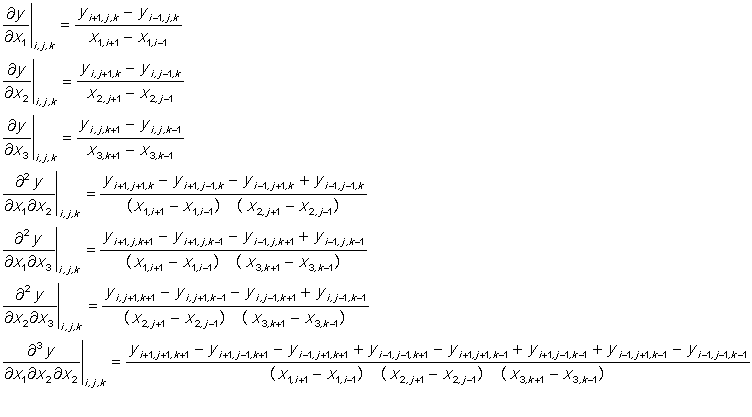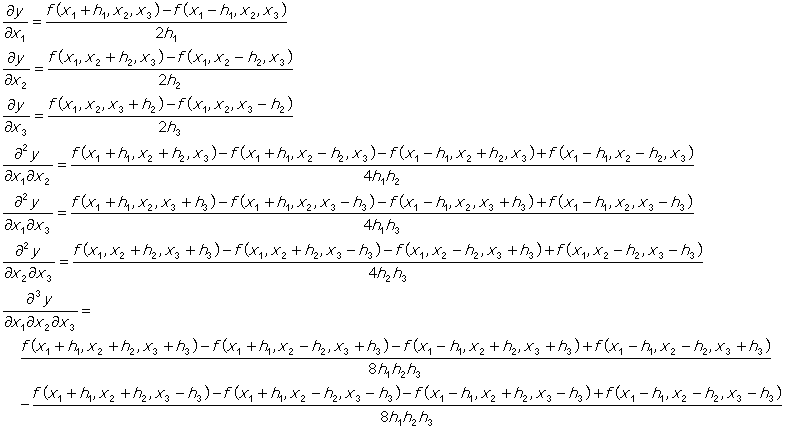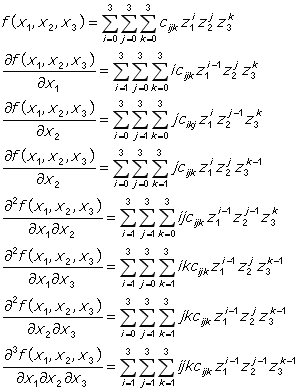The gradients are calculated using only the supplied data points, i.e. as,

The gradients are calculated using a tricubic spline interpolation, i.e. as,

where h1, h2 and h3 are calculated as:
h1 = delta times (maximum value of x1 - minimum value of x1)
h2 = delta times (maximum value of x2 - minimum value of x2)
h3 = delta times (maximum value of x3 - minimum value of x3)
The default value of delta is 1 x 10-3.
The values of the functions f(x1, x2, x3, h1, h2, h3) are calculated by interpolation of a tricubic spline of the entered data. If h1, h2 or h3 are greater than the mean separation of the relevant data points hx is replaced by the minimimum separation of the relevant data points.
See below for details of how the value of delta may be reset.
